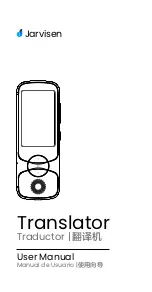
Chamber:
Hall:
Cathedrl:
Plate:
Level(0-127):
Time (0-127):
Echo Effects:
Delay:
PanDelay:
Level(0-127):
Time (0-127):
Feedback (0-127):
Chorus:
SlowChor:
FastChor:
SuperChr:
FeedbChr:
The Chamber-Reverb has the sound character of a large empty room.
The sound characteristics of this parameter are similar to those of a larger hall.
The longest Reverb-effect in this section. It recreates the reverb character of a church and
is suitable for long echoing effects.
This is a simulation of one of the oldest reverb effects. Before the digital age, people used large
thin metal plates to create reverbs. The reflection of the metal plate was picked up using a micro-
phone or sound-enhancer and then mixed back in with the original sound.
The Reverb-effects have the following parameters:
Here the level sent into the effect can be set. The higher the level the more
the original sound is influenced, ie. the greater the amount of reverb on the sound.
This value determines the decay time. Imagine it as a way of enlarging or
shrinking the 'room' you have placed your sound in. This extends or shortens the reverb on
the sound you are sending to this effect. (eg. A small room has a small decay time, whereas
a cathedral will have a much longer decay time.)
A delay allows you to create a so called echo-effect, a bit like shouting into the Grand Can-
yon, Grand Canyon, Grand Canyon.....! This will effect the whole stereo signal.
This delay makes the echo signal alternate equally from left to right.
The Echo Effects have the following Parameters available:
Here the level sent into the effect can be set. The higher the level the more
the original sound is influenced, ie. the greater the amount of echo on the sound.
Here you can set the delay time of the echo. The lower the value the faster
the echo comes back. The maximum delay for the two Delay-effects of FX1 is 1119 ms
(milliseconds).
This value allows you to set the number of echos. In a walled courtyard
you may have one echo 'slapping back' at you very quickly. In the Grand Canyon the echo
would take much longer to come back, and may repeat many times.
The chorus doubles up the original signal and then sends the double back with a minimum
time-delay, making it sort of 'swirl'. This makes the sound wider, fuller and 'fatter'.
The Slow-Chorus works the same way as the chorus.
The delay in the Fast-Chorus is so intense that you will have a very strong swirling effect.
The Super chorus creates a strong swirling and phasing. The sound appears large and ex-
tremely warm.
The Feedback-Chorus is a special effect influencing the sound in a dramatic way. The
feedback to the input is so strong that you will get an almost metallic sound. This gives the sound a
completely new character, almost robotic.
The Effects processor FX2:
The Effects
75
















































